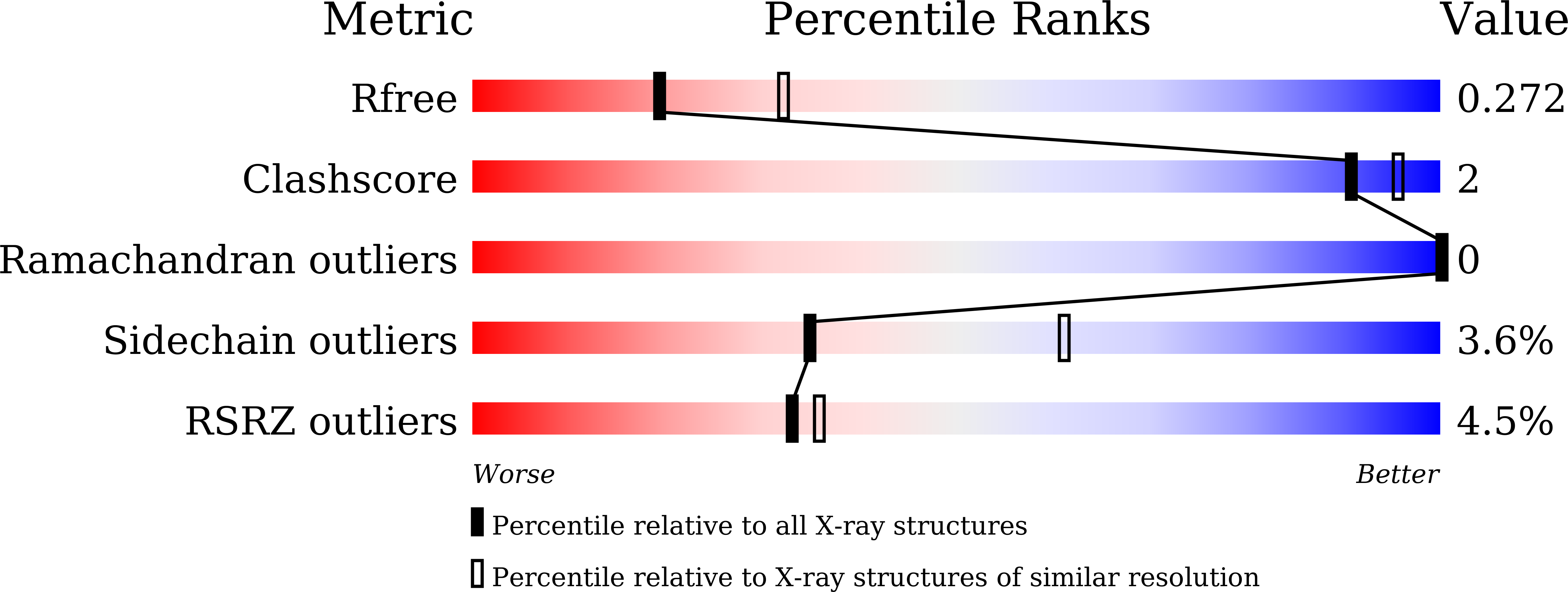Conformational effects of N-glycan core fucosylation of immunoglobulin G Fc region on its interaction with Fc gamma receptor IIIa.
Sakae, Y., Satoh, T., Yagi, H., Yanaka, S., Yamaguchi, T., Isoda, Y., Iida, S., Okamoto, Y., Kato, K.(2017) Sci Rep 7: 13780-13780
- PubMed: 29062024
- DOI: https://doi.org/10.1038/s41598-017-13845-8
- Primary Citation of Related Structures:
5XJE, 5XJF - PubMed Abstract:
Antibody-dependent cellular cytotoxicity (ADCC) is promoted through interaction between the Fc region of immunoglobulin G1 (IgG1) and Fcγ receptor IIIa (FcγRIIIa), depending on N-glycosylation of these glycoproteins. In particular, core fucosylation of IgG1-Fc N-glycans negatively affects this interaction and thereby compromises ADCC activity. To address the mechanisms of this effect, we performed replica-exchange molecular dynamics simulations based on crystallographic analysis of a soluble form of FcγRIIIa (sFcγRIIIa) in complex with IgG1-Fc. Our simulation highlights increased conformational fluctuation of the N-glycan at Asn162 of sFcγRIIIa upon fucosylation of IgG1-Fc, consistent with crystallographic data giving no interpretable electron density for this N-glycan, except for the innermost part. The fucose residue disrupts optimum intermolecular carbohydrate-carbohydrate interactions, rendering this sFcγRIIIa glycan distal from the Fc glycan. Moreover, our simulation demonstrates that core fucosylation of IgG1-Fc affects conformational dynamics and rearrangements of surrounding amino acid residues, typified by Tyr296 of IgG1-Fc, which was more extensively involved in the interaction with sFcγRIIIa without Fc core fucosylation. Our findings offer a structural foundation for designing and developing therapeutic antibodies with improved ADCC activity.
Organizational Affiliation:
Graduate School of Science, Nagoya University, Nagoya, Aichi, 464-8602, Japan. [email protected].



















